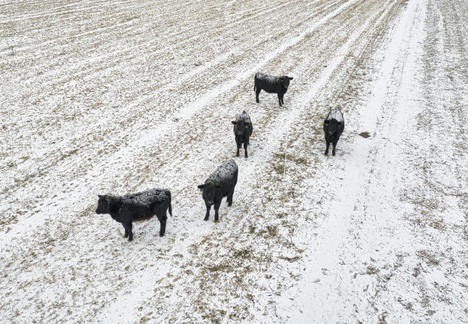
Unpredictable frost dates can make fly control challenging, but with the right strategy, you can stay one step ahead. Central Life Sciences recommends the "30/30 Method" to maximize control of overwintering horn fly pupae and protect your herd year-round.
The concept is simple:
- Keep Altosid® IGR in your feed until 30 days after the first frost in the fall to address any late-season temperature spikes that may encourage lingering fly activity.
- Start feeding 30 days before average daily temperatures climb to 60°F in the spring, when overwintering flies begin to emerge.
This proactive timeline ensures a smooth transition between seasons and helps reduce fly populations before they can impact your operation.
Three Steps to Implement the 30/30 Method
- Start Early
Begin feeding Altosid® IGR approximately 30 days before the average daily daytime temperatures reach 60°F. This is when overwintering flies begin to emerge, making it a critical window for prevention. - Extend Feeding into Fall
Continue feeding for 30 days after the first frost has occurred to target overwintering pupae. This step gives you a head start on controlling next year's fly populations. - Strengthen Control with IPM
Support your fly control strategy with a well-rounded Integrated Pest Management (IPM) program that incorporates cultural, biological, and physical-mechanical methods alongside Altosid® IGR.
Why an IPM Program Matters
An IPM program is a comprehensive pest management strategy that integrates different control methods to maintain herd health and protect your bottom line. A strong IPM plan includes:
- Cultural Control: Focusing on husbandry and sanitation aspects that impact fly development.
- Biological Boost: Encouraging natural predators and beneficial organisms.
- Chemical Containment: Using fly control products strategically to support other efforts.
By combining the 30/30 Method with an effective IPM program, producers can better navigate unpredictable weather and keep horn fly populations in check. This approach reduces overwintering pupae and minimizes the number of flies that emerge in early spring---when fly populations typically spike.
The Economic Impact of Fly Control
Flies can cause significant financial losses for beef producers, and their impact is well-documented. Implementing the 30/30 Method helps lower horn fly populations before they reach the economic threshold, ensuring cattle comfort and improving overall profitability.
Feeding Altosid® IGR 30 days past the first frost and starting 30 days before fly season gives producers the upper hand against overwintering pupae, setting the stage for a more controlled and profitable fly season the following year.
